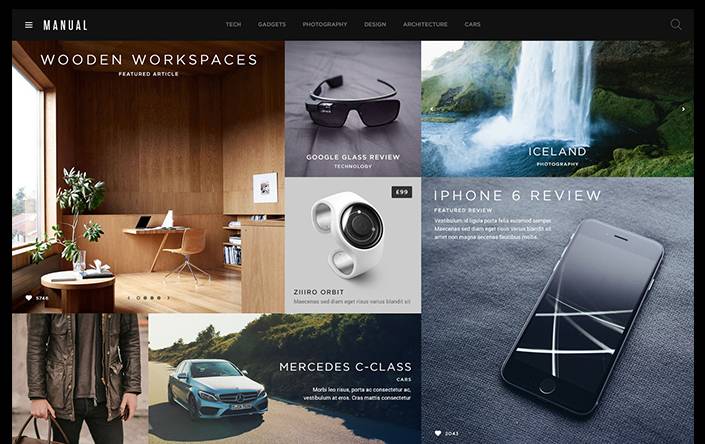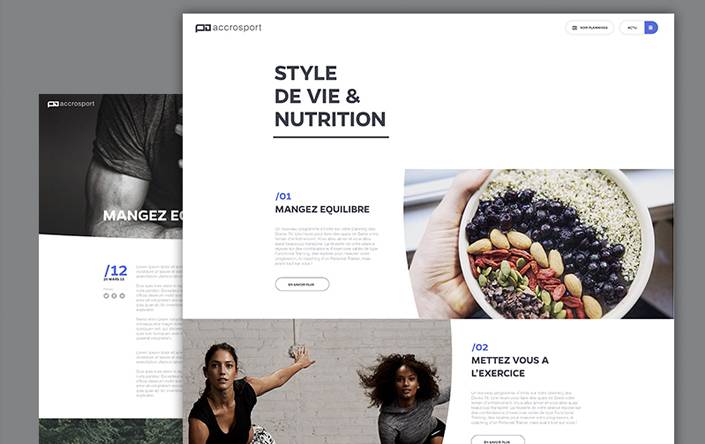Does your website have a blog?
Blogging is a great way to drive traffic to your site, establish your brand and showcase your expertise but what is the best way to attract readers? Does it come down to quality or quantity?
A Quality blog post is usually one that is well-researched, insightful and offers information on a particular subject. The topic is often strategically thought out and may even indirectly promote your brand or service. Over time these types of posts become valuable references and often rank well in search results. They are posted to the site less frequently and can be of any word length.
While quality posts take longer to write, they definitely help to establish your brand as an authority and offer a lot of value to your readers. This in turn will hopefully help to boost sales and engagement.
The one thing to note with quantity posts however, is that they may alienate readers who are not interested in reading a lengthy article and they may also be limiting in terms of what you can write about. They also take far more research and time to put together.
Quantity blog posts however, refer to blogs that are published more frequently and do not offer detailed or specific information. Instead they are more generalised and offer snippets of information rather than a lot of great detail. They are usually quick to read, simple to understand and cover a variety of topics.
Quantity blog posts are quicker to write and help to draw in a wide variety of readers to your site. Due to the increased readership and traffic, leads and sales may increase.
The few downsides to quantity posts is that they offer little value to readers, they tend to decrease engagement and because they are not as specific, it is often harder to convert your traffic into sales.
As you can see there are many pro’s and con’s to both quality and quantity posts, but which one is right for your brand?
The answer may depend on your target audience and your intentions however, we have broken things down to help you navigate this important blogging question…
1. Start with Quantity
Is your blog just starting out?
When your blog is just starting out it is often suggested to start focusing on quantity first. This helps to get your articles circulating and helps you to establish your blog quickly and easily. It also allows your audience to begin to take notice of you.
By having more blogs you can also gain more traffic, build an email list and begin ranking in search results. In fact, Google will start to register your activity once you have a consistent audience and regular updates to your website.
You may need to experiment with how many posts you want to publish each week. Perhaps start out with 2 per day including weekends and then either increase or decrease from there depending on how your audience responds.
Keep in mind, there is only so much content your audience can read each day but at the same time, don’t be afraid to experiment with bigger numbers.
Once you have a large and varied selection of blogs you can also begin sharing them on sites like StumbleUpon, Facebook, Twitter and Reddit. This will help you to begin building a strong social following and help increase your readership down the track.
2. Move to Quality
Once you have a consistent flow of traffic and you have started to build a small following, you can start focusing on quality. This is because often posts that focus on quantity are good for getting in traffic, but they are not so good for engagement or bounce rates.
Be mindful that by switching to quality posts and posting less frequently you may receive a dip in traffic. On the other hand however, you should see an increase to time spent on the page and a decease to the bounce rate.
At this point, it would also be recommended to share your content on more targeted social sites like LinkedIn or Pinterest for example. This is to ensure that you can reach a specific audience who will actually benefit from receiving such detailed information.
Offering 3-5 quality posts per week may take some time to build up, but eventually you will start to establish your brand as an authority and attract the right type of audience members to your site.
3. The Middle Ground
Research has found that sites that focus on quantity receive more traffic that is less engaged, whereas quality posts receive less traffic that is more engaged.
While this is very generalised, understanding this statistic should help you put in perspective which direction you may want to go.
Quality and quantity posts both have their place in the blogging world, but sometime it does take a little experimenting and finessing to work out what your audience is really looking for.
Each industry and brand will also be different depending on specific needs, goals and current metrics.
For example, if your blog is receiving a lot of traffic but your engagement is low, try offering posts that focus on quantity instead and see how it changes. Just the same, if your blog is receiving little traffic, try posting more frequently to see if that increases the flow.
You may also need to blend the two posting styles to see if a combination of each will work better- perhaps a finding the middle ground will work best?
4. Post Types
Whether you are choosing to go with quantity, quality or a little bit of both, the style of post you choose to write will also play a factor.
The most common posts styles around today include:
Tactical: these teach readers how to do something or inform them of a particular topic or subject. They offer detail but don’t really get into specifics. This type of content is often around 600 to 1000 words.
Deep Tactical: these teach readers a more advanced concept and often include statistics, research and quotes from experts. or industry leaders. They can also offer case studies and detailed examples. This type of content is often over 1500+ words.
Infographic: a visual post that helps to collaborate information into an easy to read visual format. Often has a short introduction paragraph of no more than 200 words. This type of content has a very low word count and is more visually stimulating.
Editorial: these offer an insight into the mindset of an industry leader or trending topics in the industry. They often discuss issues and events happening rather than offering a point of view or a conclusion. They may be indirectly related to your brand and are usually under 800 words.
Promotional: these offer a short and directly targeted promotion to a particular product or service. They are often written for sponsors or to promote a service for your own brand. They may also lead to downloading or subscribing to something, such as an ebook, email list or webinar. This type of content is often short, to the point and offers the reader some type of benefit or advantage.
Syndications: these posts are written on other websites and shared on your own. Usually the information is relevant to your brand or service and showcases some important information about your industry. The information is usually generic but still offers interest to your readers. References to the source are always included.
Listicles: these posts are often quick reading and contain lists or dot points for easy navigation. They are often clear, to the point and offer basic information quickly and effectively. They rarely go into detail. This type of content is usually under 1000 words.
Top of the Funnel (TOFU): these are posts that focus specifically on your target audience and communicate a need in what your customer wants and what you have to offer. These posts usually focus on internet trends, business topics and are lighter in nature. They also often have a specific goal in mind. These types of posts are usually less than 1500 words.
Choosing which type of post format to include on your blog is definitely a personal matter, but it is interesting to note which styles perform the best.
In market research, it was found that over a six month period TOFU style posts performed the best in terms of acquiring the most leads. This was followed by Deep Tactical, Infographic, Promotional, Tactical, Listicles, Editorial and Syndication.
In fact, Syndicated posts performed the worst compared to all the other posts types.
Research also found that TOFU, Deep Tactical and Infographic style posts also performed the best when it came to traffic and page views. TOFU and Deep Tactical also did the best on email platforms and social media.
As you can see, TOFU and Deep Tactical posts seem to have consistently performed the best according to market research, so perhaps test out writing more of these style posts to see if it benefits your brand.
You may also want to reconsider syndicated posts too or lower the number that you choose to share. In fact, syndicated posts may be a good strategy for weekends when you don’t necessarily want to put in too much effort but you still want to share content.
5. Keep it Consistent
No matter what type of blog post format you choose or whether you want to focus on quality or quantity, the trick is to keep what you are doing consistent. This not only helps you to monitor your metrics more effectively, but it also gives your audience a chance to get used to your style and brand.
When you start measuring what type of content is doing best on your site you want to pay attention to the traffic and traffic sources, the average time spent on each page, the bounce rate and how many subscribers or sales you collect on each individual post.
By tracking these metrics you will begin to easily determine whether quality or quantity is king.


Hey!
It looks like you're browsing in . Would you like to switch over to the website?